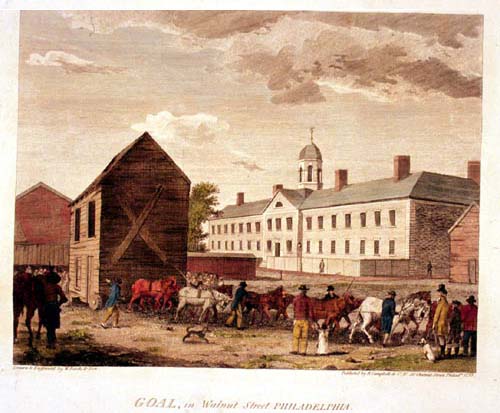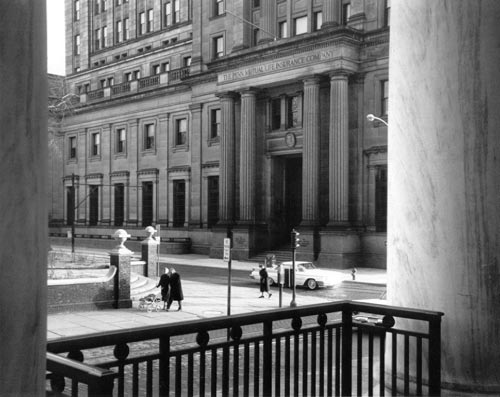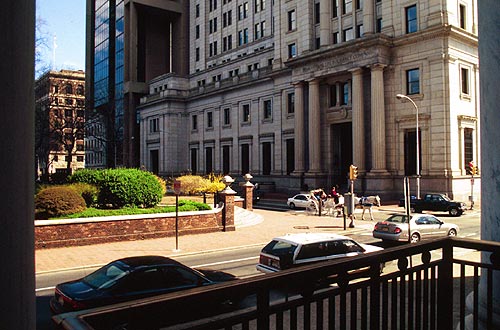The Walnut Street Jail (Goal) was built 1773-76 from designs of Robert Smith and demolished about 1835. The prison's lot was bounded by Walnut Street, Sixth and Prune Street (now Locust) with the main building fronting on Walnut Street. William Penn, who did not favor capital punishment, established the most humane penal code in the colonies. Only murder and treason were punishable by death and imprisonment at hard labor was the standard punishment for other serious crimes. As Philadelphia grew and crimes increased the penal code became more severe Overcrowded jails with deplorable living and working conditions made the need for reform evident. In 1787, the Philadelphia Society for Alleviating the Miseries of Public Prisons was organized. The Society's perseverance was responsible for the adoption of new laws which made significant changes in the administration and treatment of inmates. Those convicted of serious offenses were to be subjected to "unremitting solitude at hard labor" for a period to be fixed by the court. It was hoped that solitary confinement would ultimately result in repentance and spiritual regeneration. The Walnut Street Jail was called "the first penitentiary in the world," the reference being principally to a small building in the rear which was built in 1791 to house prisoners whose sentence included solitary confinement. During the 1790s the Jail and the Pennsylvania system of solitary confinement were greatly admired throughout the world. By 1800, however, mounting disciplinary problems caused by overcrowded facilities brought an end to the Jail's finest years. The two-story wooden structure (FG-L) was a former blacksmith shop that was purchased by the Rev. Richard Allen who had it rolled over ground and placed on a lot he owned at the northeast corner of Sixth and Lombard Streets. In 1794, the building became the first home of the Bethel African Methodist Episcopal Church founded by Rev. Allen. The land is the oldest in the country continuously owned by African Americans. Today, the church is known as the Mother Bethel African American Methodist Episcopal Church, and its present building was constructed in 1890 on an adjacent lot.
Photographs
The photographs were taken from the portico of the Curtis Publishing Company building (now Curtis Center) on Sixth Street at Walnut and show in the background the Penn Mutual Life Insurance Company buildings (now Penn Mutual Towers). In 1972, the Insurance Company completed the concrete and black glass tower (L-BG), designed by Mitchell / Giurgola, incorporating, in its original place, the Egyptian revival marble facade of the Pennsylvania Fire Insurance Company's building (see Plate 23).
Back Next




